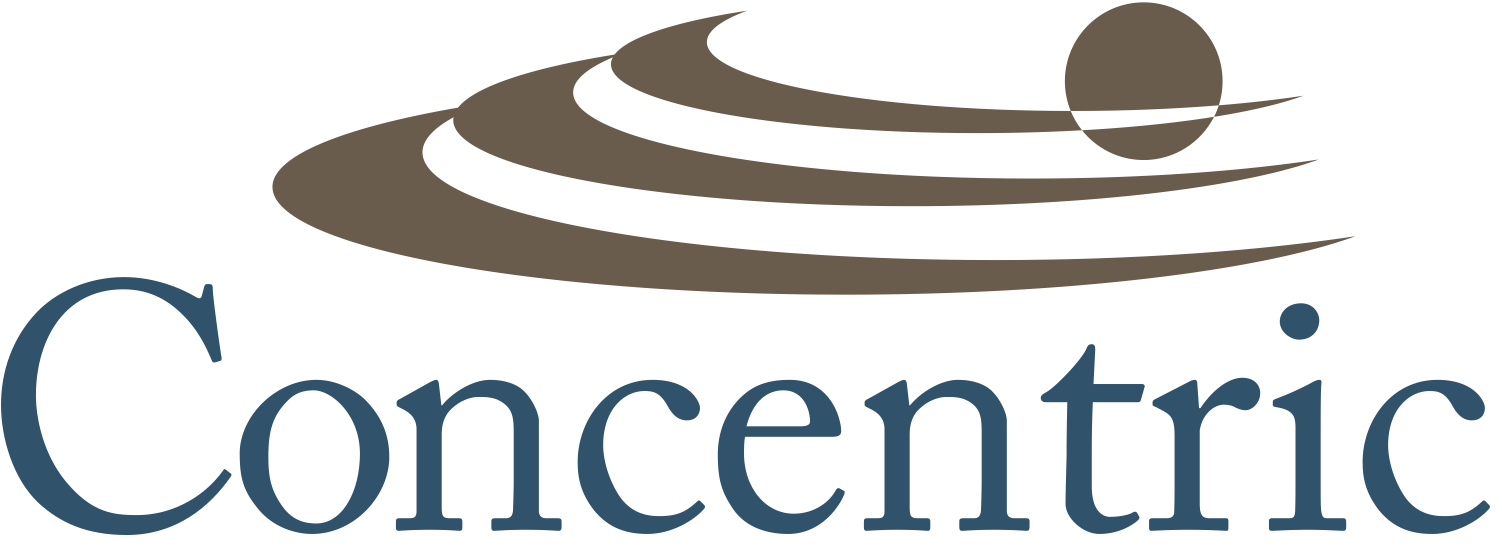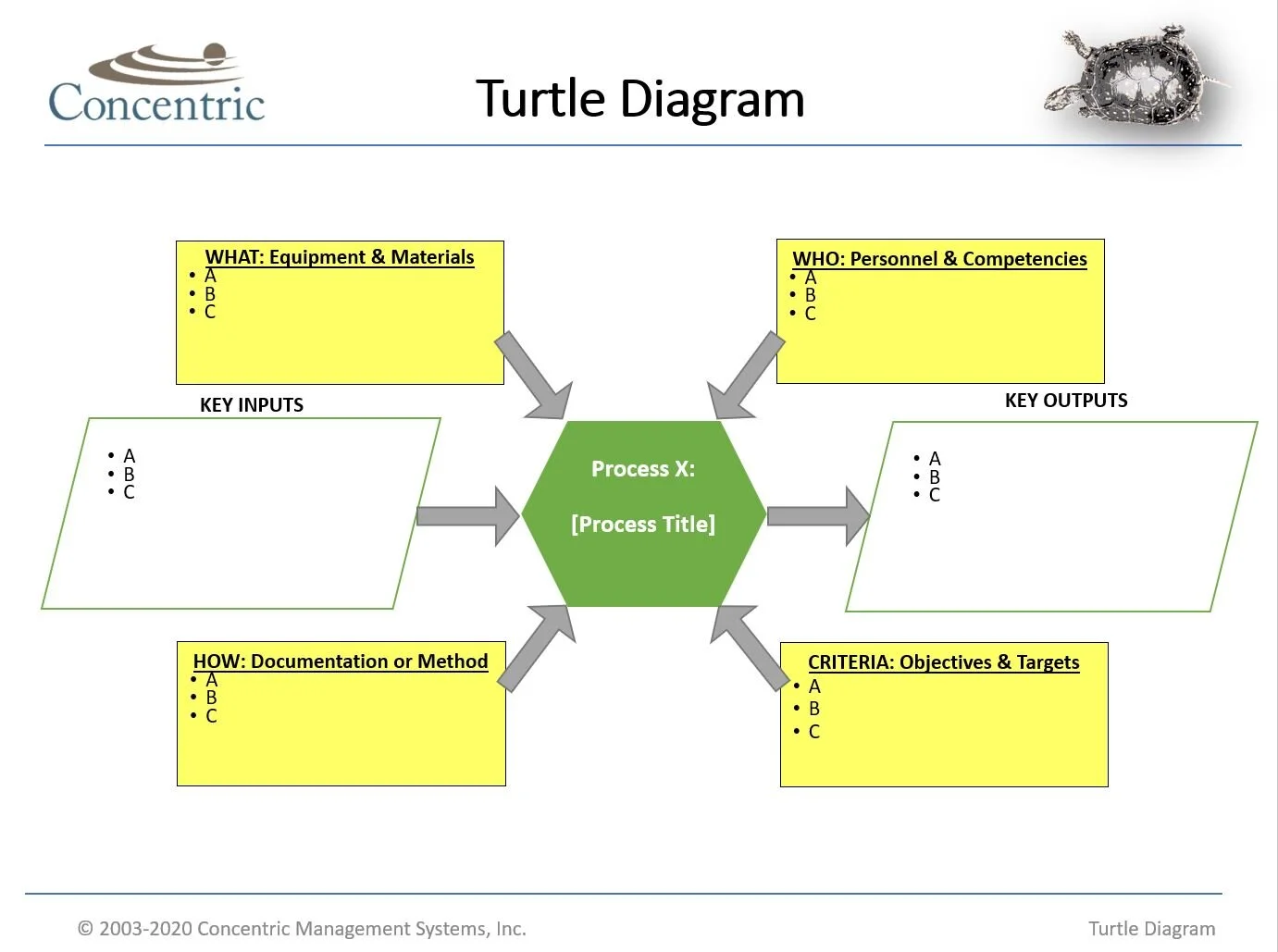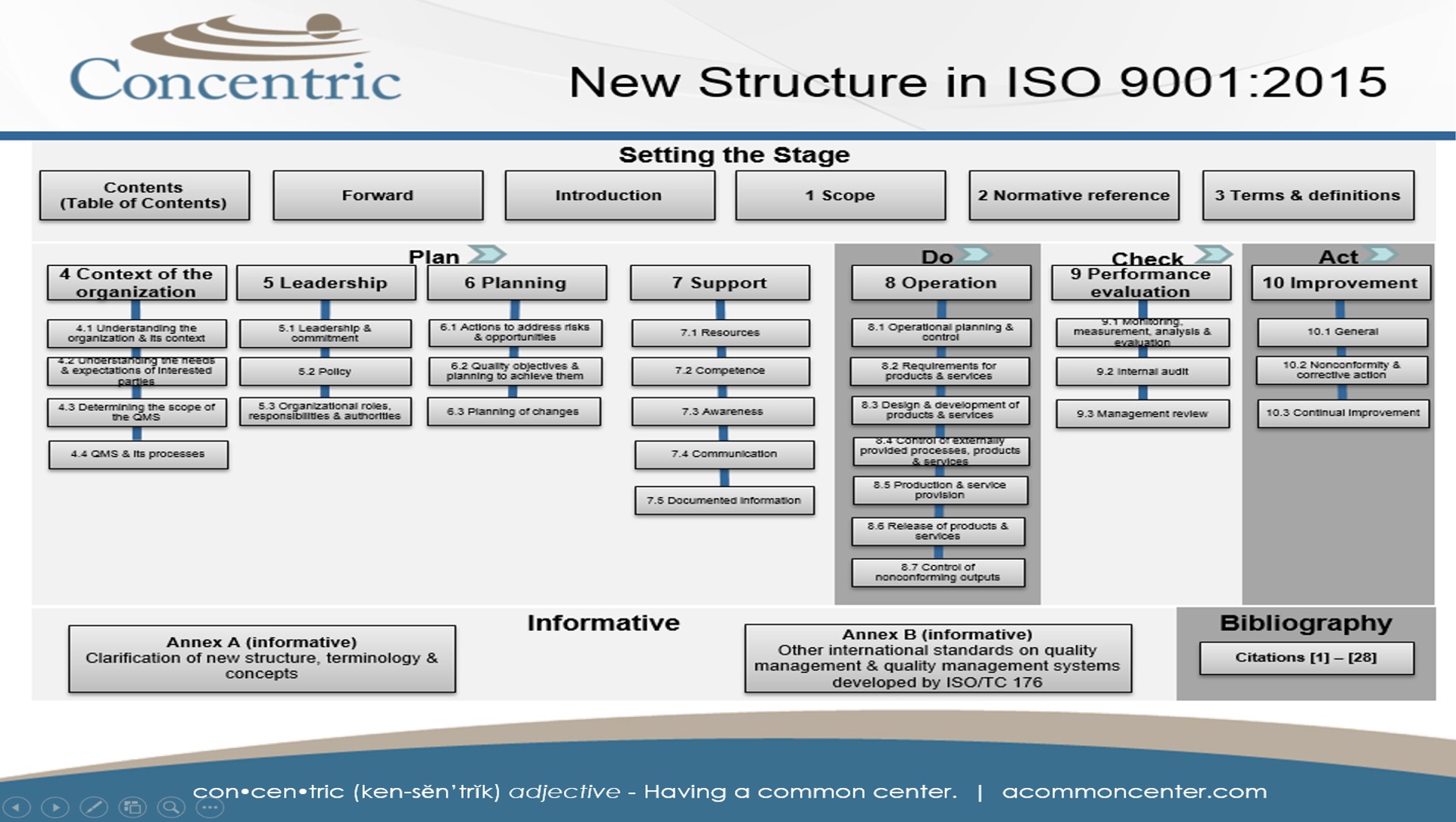Trying to get a startup business off the ground can be a scary endeavor. Apart from gathering the right people to help you fulfill your vision, gathering clientele and keeping them interested and engaged will take all of your time and effort; and because of the size of your company, every hit against your coffers has the potential to devastate your startup.
Read MoreThis week, I was sent a request to provide feedback on behalf of a US certification body on my recommendations for the future of ISO 9001:202X. Here is a summary of my comments based on the 3 questions asked:
Read MoreThe SIPOC diagram stands for Supplier Input Process Output Customer. Like the turtle diagram, the SIPOC is a schematic representation of the elements of a single process - starting with the supplier and ending with the customer.
Read MoreA "Turtle Diagram" is a quality tool used to visually display process characteristics such as inputs, outputs (expectations), criteria (metrics) and other high-level information to assist in the effective execution and improvement of key business processes.
Read MoreAs I find myself in my mid-40s, I have noticed a bit of a changing of the tides lately. I’m starting to recognize a shift from spending much of my time ASKING questions to more of my time in ANSWERING questions. One question that I’ve spent a lot of time with lately could be categorized as “What do you wish you knew then that you know now?” with regard to my professional career. While there is more than one answer for me, the answer that seems to illicit a lot of emotion and often times even anger with others is the topic of empowering others - specifically with empowerment around information.
Read MoreDuring my first 25+ years of working with various organizations and leadership team members, I've noticed that most struggle with the concept of a management systems or processes that make up a system. A mentor of mine once stated "No one wants to build a house. But everyone sure as hell shows up when its time to paint it." I thought that was not only really funny but also similar to building and maintaining management systems.
Read MoreToday, ISO launched their video introduction of the newly published ISO 18091:2019 Quality management systems -- Guidelines for the application of ISO 9001 in local government. Although the ISO 18091 document was originally published in 2014, adoption of ISO 9001 in local government has been slim thus far.
Read MoreAIAG announced the release of their core tools support software, a cloud-based solution for authoring and managing core tool documentation such as FMEAs, Control Plans and PPAP documents. The software also allows for collaboration across multiple sites.
Read More38 Required Records of ISO 9001:2015 (20) and IATF 16949:2016 (18)
Read MoreIn an article published by SC Manufacturing Magazine titled Quality - A Top Business Priority for Manufacturers[1] spoke to me as a quality and process improvement practitioner. One statement that I had earmarked was, “Manufacturers across value chains face competitive and market pressures, customer demand, and complex products and value chains that necessitate a broader approach to how products are designed, delivered, and serviced.” A focus on cost reduction or product quality alone is no longer enough to compete in today’s global market place. Just as cup holders and electric windows are no longer enough to win you over as an automotive consumer, organizations must pursue excellence in more aspects than ever in their quest to produce happy and loyal customers. What is the key to quickly improving organizational performance you ask? Optimization of the performance of each player on the team.
I remember as a kid reading about how a man literally ate an airplane[2]. How did he do it? One tiny bite at a time. This same concept can be applied to the sum of individual performance and its effect on overall organizational performance. The bridge that connects individual performance to optimized process performance, and on to overall organizational performance, is workforce development. Figure 1 illustrates the path from individual development plans (IDP) to organizational excellence (OE).
Read MoreHere at Concentric, we like change and typically embrace it. However, we are in agreement that several changes to the 2015 release of the ISO 9001 standard are just annoying. Changes that make understanding of the requirements less simple are, well… not simple. One example is the ambiguity associated with how many and what kinds of documented procedures and records are required. Now that the term "documented information" is being used, subscribers have to get out their ibuprofen, highlighters and dig down into the standard looking for clues like the words maintained (document required) and retained (record required). We've decided to create some more user-friendly tools to help you to better understand what's inside this 42-page document.
The following sections may be helpful in better understanding what is required vs. what is optional, for those of us who appreciate simple. All documented information, be it a traditional document or record, must be controlled in accordance with clause 7.5 Documented information. In order to make implementation and auditing simple, we recommend purchasing a printed copy of the standard and highlighting where the terms “maintained” and “retained” exist. The following sections can also be used as a quick reference guide to assist you in locating documentation requirements, examples of documents that may be used “as needed” and matrices to help you map standard references to your own language.
Read MoreIf your answer is YES, which best describes the motivation for this adoption:
- This Standard is your industry’s general practice?
- It is your customer’s request?
- It is a Marketing initiative to improve your competitiveness?
- Or simply because you are ISO 9001:2008 and want to keep the registration?
You may acknowledge one or more of the justifications above as genuine enough in your case. However, your organization’s leadership truly believes that the very first statement of the ISO 9001:2015, clause 0.1 Introduction, is valid, and that’s significantly larger than all the justifications above combined!
“The adoption of a quality management system is a strategic decision for an organization that can help to improve its overall performance and provide a sound basis for sustainable development initiatives”.
The understanding of this Standard’s requirements, recommendations and permissions demonstrates an intuitive and logical rational that concludes that none of the requirements are unhelpful or useless. Indeed, compliance with ISO 9001:2015, means the minimum applied efforts and resources to achieve a better business structure, with more productivity, more competitiveness and, sure, more growth. Let us explain this rational!
Read More




















